- Sharing Our Places
- Stanley Milner Gallery
- Royal Museum of Alberta
- Muttart Conservatory
- Thursday Challenge
:: Previous Page ::
5JAN06 - Special Thursday Challenge Interview of Jim Krause
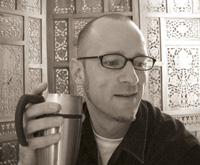
I am very pleased to introduce Jim Krause to you. Jim is a professional designer and photographer. The first book that he wrote that I purchased was the “Idea Index”. I have read far too many “big” books, so the smaller size of his book, how it was organized and, of course, the ideas in it, greatly appealed to me. Since then, buying “Index” books has been a bit of an addiction. The latest of his books that I picked up was Photo Idea Index (2005). I love it. My first test of any photography book is the answer to the question “do I like the photos?” My answer to that question is “definitely yes”. I find the book a unique and up-to-date coverage of what one needs to know to do photography with passion. So I thought it would be a great idea to interview Jim for the participants in the Thursday Challenge.
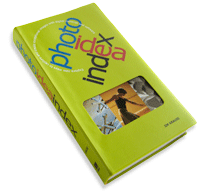
1. You have written both design and photography books. How did you get started in photography? Was it design that came first and then photography or has photography always been a passion for you?
Actually, drawing and painting came first. Then, while in high school, I became interested in printing and typography. As a designer, I've been combining these interests ever since.
Photography, for me, really started when digital cameras arrived on the scene. Since I was already doing most of my design work on a MAC, the digital camera was a tool that could be instantly integrated into my routine. And, having art-directed a lot of photo sessions, and seen how photographers worked and lit their scenes, I had the audacity to believe that I could mimic some of their simpler work.
2. What do you enjoy most about the medium of photography? What do you like least about it?
Coming from a drawing/painting/design background, I tend to think of photography as a means of "instant illustration." Well, almost instant; I almost always drag my potentially worthwhile photos into Photoshop for treatment before I am ready to show them to anyone else. Anyway, the thing I enjoy most about photography is the ability to explore composition by moving and tilting the camera and by changing lenses, focus and depth-of-field. In the same way, in the studio, I enjoy playing around with the effects of direct, diffused and reflected light - it's so much easier than mixing paints on a palette.
I am enamored with Photography and don't really have any dislikes with the medium. I mean, even the pain-in-the-neck stuff like blurred images and lenses that can't take in enough light for a clean shot don't bother me. That kind of thing just leads to shots that are interesting in their own way.
3. Other than the convenience, what have digital technologies (cameras, software) brought to your photography?
Digital technology didn't bring something to my photography; it brought photography to me. Sorry if that sounds corny, but it's true. I tend to not like artistic mediums that punish you for mistakes along the learning curve. And being a slow learner, I've always thought that paying for bad pictures was punishment. The thing I like most about digital photography is the freedom it gives you to fail without facing negative consequences. Unsuccessful images can just be erased or ignored. I love how digital cameras encourage improvisation, compositional exploration and risk taking.
Here's a real-life example that I'm sure many can relate to. For Photo Idea Index I wanted to take pictures that demonstrated connotations of movement. Somehow, I came up with the idea of having a woman put on a pair of wings, leather helmet, goggles, a tank-top, checkered tights and high-top tennis shoes, and then having her ride an old-style bike in circles around me on a playground while i took pictures. Well, it was a rainy, cold(!) and very windy morning in NW Washington State when we went out to shoot (the model was a great sport about the whole thing - she never complained in the least about the conditions). I had to brace an umbrella over my head with one hand while holding the camera in the other, spinning and shooting non-stop while she rode in circles around me. I wasn't able to look through the viewfinder while shooting since doing so made me feel sea-sick. The process was anything but an exact science - it was impossible to precisely aim the camera or time the shots so that the backdrop was in an ideal location every time the shutter-button was pressed. So, to make a short story even shorter, I just went with it. I made a few adjustments to the settings on my Canon 20D and just started clicking away on rapid-fire mode while she rode around and around. I took close to a thousand shots in a relatively short amount of time. From those, I found about 50 that I liked, and then narrowed these down to a dozen or so that I finalized in Photoshop (sample included). I would never have the guts (or the finances) to take photos in this way using a film-eating camera.
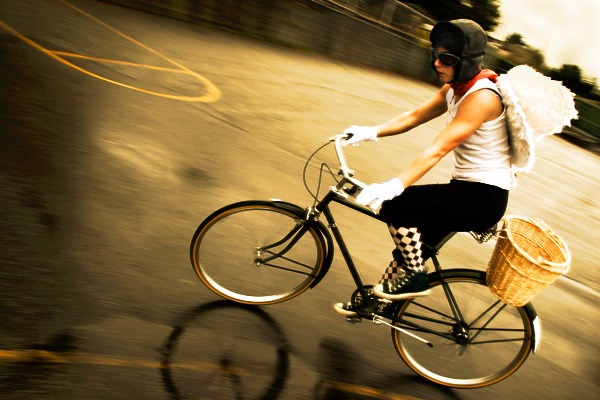
4. Tell us an interesting, fun or dangerous experience that you have had while doing photography.
For me, "dangerous" means talking to strangers. It's not that I don't like people, it's just that I tend to go the slow route when it comes to making friends, etc. Since I really enjoy taking portraits, photography has encouraged me to get over the whole shyness thing to some degree.
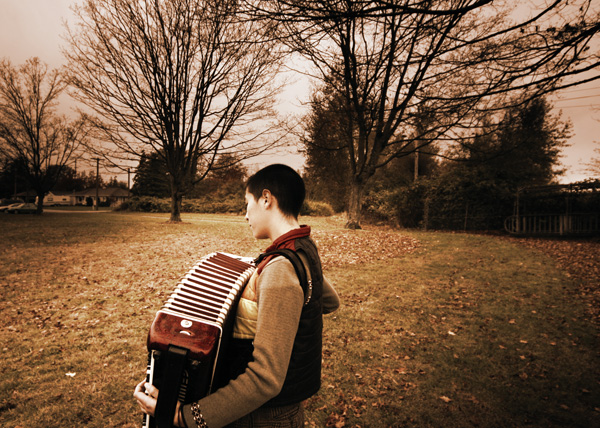
A case-in-point involving the photograph of the accordion player: This is a woman who I see around the mid-sized town where I live. One day I noticed that she had shaved her head and I immediately thought: photo opportunity! One afternoon I saw her sitting outside a coffee shop and I approached her, introduced myself, and asked if I could take pictures of her sometime. This, to me, is as uncomfortable as it gets. I don't like encroaching on people's personal space, and I'm aware that the personal space of younger women ought to be especially respected since it is so often overrun by men. Anyway, she was surprised at the question but said yes. When I found out that she played the accordion, I knew that it was going to be a fun shoot. I never ask my "models" to pose. I just hang out with them and chat while taking pictures. In this case, the woman played and sang and walked about during the whole session. A very nice afternoon spent listening to live music, dodging the occasional rain shower and taking pics.
5. Would you be willing to share with us 2 or 3 photos that you have taken that you especially like? What do you like about them?
In addition to the ones referred to above, here are three more that are fairly representative of other veins of images that I enjoy pursuing with my digital cameras.
1. I'm always on the lookout for textural images that could be used as-is or as backdrops within designs. This image is of the peeling paint on an outdoor café table where I happened to be eating one afternoon. To me, images like this blend my interests in painting, abstract art and photography. 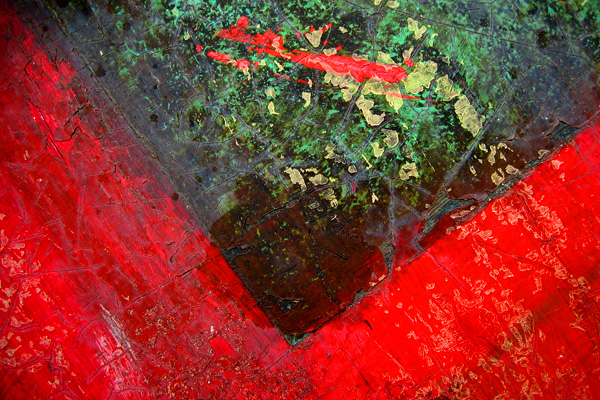
2. I love my macro lens! Here, a simple close-up of some jacks has been given a work-over in Photoshop. Having used Photoshop for many years, I enjoy running images through filters and effects until I start seeing something I like. Often, as in this case, I end up applying filters and effects so randomly that in the end I have little idea of how I got the final result.
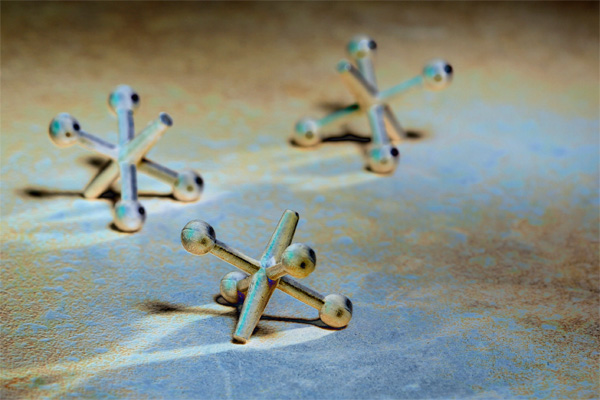
3. As a designer first, and a photographer second, I'm strongly drawn to intriguing natural compositions. These enormous metal buoys (used to define a parking area in a seaside park) definitely caught my attention. I spent many minutes moving around looking for a favored point of view, taking pictures as I went.
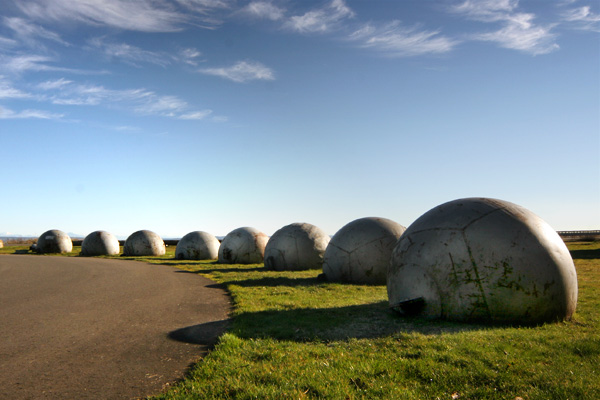
6. Could you tell us what you think is one of the top tips for taking, or should I say making, great photographs?
I should be taking tips from the regulars at spunwithtears.com! I'm a designer who takes photos; i don't (yet) think of myself as a card-carrying photographer.
If pressed, however... here are a few thoughts. Beauty, in photography, is determined by the eye of the camera-holder. Use whatever camera you have and take pictures. Lots of pictures! Have fun; goof around with your camera. Try to take pictures that do NOT look like everyone else's. Move yourself and your camera around until you start finding points-of-view and lighting situations that are different than the "norm." Wiggle, jiggle and shake your camera as you shoot and see what happens. Embrace the non-traditional (as well as the traditional). Also, consider keeping a pocket-cam with you at all times (I'm never without my Canon Powershot SD500): you never know when something photo-worthy will present itself.
Thanks for reading!